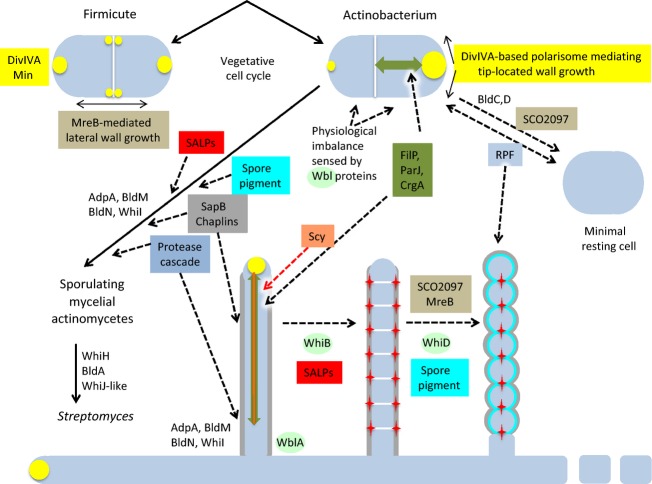Fig. 10.
Acquisition and roles of actinobacteria-specific genes and processes during evolution. It is postulated that a difference in the location of cell wall growth, associated with the use of different central organising proteins (MreB or DivIVA) for peptidoglycan synthesis, was a key element in the early separation of the lines leading to firmicutes and actinobacteria. Polar growth may have been facilitated by the early acquisition of certain conserved cell-biological proteins (FilP, ParJ, CrgA) and proteasomes. Wbl proteins may have sensed the sudden difference in cell physiology consequent on asymmetrical division into a larger rapidly growing daughter cell and a smaller virtually nongrowing one. Entry of primitive Actinobacteria into stationary phase probably involved regulation by orthologues of BldD and BldC (as well as of actinobacteria-non-specific proteins such as WhiA and WhiG that are not shown). Tip growth potentiated the emergence of mycelial growth, which in turn predicated the need for some kind of fragmentation, which takes the form of sporulating aerial mycelium in Streptomyces. The stepwise acquisition of additional functions playing important roles in Streptomyces development is indicated. Proteins with structural or enzymatic roles are shown in coloured boxes, and their locations (or the locations of their products) are shown in corresponding colours. Regulatory proteins are unboxed. Wbl proteins are shown in pale green ovals.

